Invest in Morocco: Top Reasons to Invest in Morocco
Morocco Sector Analysis
Invest in Morocco: Top Reasons to Invest in Morocco
Morocco is the safest and most stable country in the MENA region for investors.
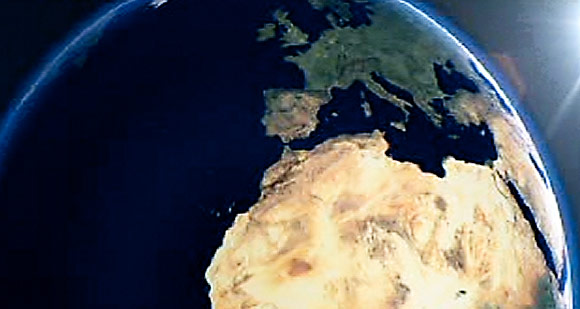
Invest in Morocco: Top Reasons to Invest in Morocco
>Morocco Political Stablity
>Morocco Economic Planning
>Morocco Strategic Location
>Morocco Free Trade Agreements
> Open Skies
> Jet4you
Morocco country report is—and must be—different than any other previous country report issued on a country in the MENA region. Up to the end of December 2010, it was possible to write a country report by simply recounting the facts and statistics relating to overall growth rate, financial stability, and trend lines for each sector of the economy. However, since the outbreak of unrest that has inflamed the region since the beginning of January 2011, no report based on trends or past performance can be relied on as any guide to the future. Of the 22 nations of the MENA region, two governments have already fallen (Tunisia, Egypt), one is in outright civil war (Libya), at least three are restraining angry crowds of protestors with blunt military force (Bahrain, Yemen, Syria), — or trend lines can be considered
As a result of the focusing of the economy to develop tourism and seek investment opportunities, the Moroccan economy has lunched ahead since 2001. Where it grew at a rate of about 3% in the 1990s, it has grown at an average rate of 5% in the 2000s. As Morocco emerges as the most politically stable country of North Africa in the wake of the unrest gripping the region, Morocco is poised to grow at an ever-faster rate.
It is not often that the news from a single country is so consistently encouraging to potential investors as the news from Morocco. After a decade of the most concentrated national planning and infrastructure development, that country is now about to enter its economic takeoff phase, with the goal of being recognized as one of the Top-Twenty Emerging Economies of the world by 2020. The time is now ripe, therefore, for investors both large and small to get in on the ground floor of an economic boom that is just taking off.
There are two reasons for this:
1) political stability in the midst of regional instability; and
2) national planning for growth that is now coming to fruition and is ready to take off. Let us briefly review each of these, and then move to the abundant good news from every sector of the economy, which literally begs investors to come and invest in Morocco and to take advantage of the Moroccan government’s invitation to:
Morocco is the safest and most stable country in the MENA region for investors.
“Come and earn money with us. We want to make partnerships win-win. We say to investors that Morocco is developing and there are new markets and new opportunities. We are not asking [investors] to come here to help Morocco, but to come and make profits here.”
–Tariq Senhaji, Chairman of Moroccan Agency for Tourism
Political Stability: The “Big Scare” versus the “Moroccan Exception”
Many investors have been scared off from investing in any economy in the MENA (Middle East/North Africa) region by fears of civil unrest arising from the “Arab Spring”—which has so far toppled governments in Tunisia and Egypt, and has either provoked civil war, as in Libya, or threatens violent protest or disruption, as in Bahrain, Yemen, Jordan, Syria, etc.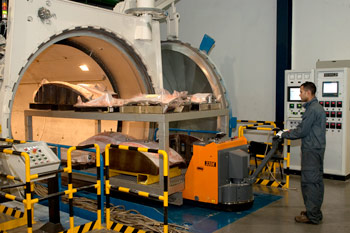
As a result of this unrest breaking out in more than a dozen countries of the region, the whole Arab world is often portrayed in the media as exploding. Yet, it is this very fact makes this country the ideal place for new investors to focus upon and invest in Morocco.
For, Morocco is the one country in the region that is the exception—noknowledgeable observers expect its government to fall or its economy to be disrupted. The reasons are simple:
-
Morocco has a popular king who has been pursuing democratic reforms for more than a decade;
-
Morocco has a relatively free press and media which, with three exceptions—criticism of the monarchy, Islam, or the government’s role in the Southwest Sahara conflict—is vibrant and outspoken;
-
Public demonstrations are freely permitted, and occur without the need of major police presence;
-
Such protest demonstrations as have occurred have been nonviolent, relatively small, and have not called for the removal of the king;
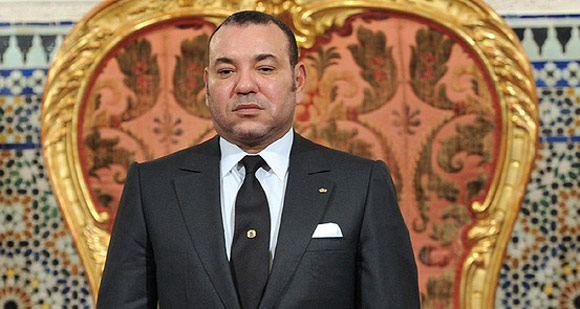
-
On March 9th, King Mohammed VI promised constitutional reforms granting greater powers to elected representatives, far-reaching anti-corruption measures, major reforms of the judiciary, and greater human rights protections;
-
The only change expected in Morocco in the foreseeable future is peaceful change entailing greater democracy and human rights.
All this is to say that Morocco is the one nation in the Middle East and North Africa that is led by a government genuinely popular and trusted by its own people. It does not fear either demonstrations attempting to topple it or popular uprisings against it.
As this becomes more widely known, many investors who have cancelled or delayed investing in many of the other, now unstable economies in the region will be turning their attention to Morocco. For potential investors reading this Marcopolis Country Report on Morocco, you will have the benefit of hearing it here first:
Morocco is the safest and most stable country in the MENA region for investors.
Economic Planning Coming to Fruition
The second reason for optimistic news about investing in Morocco is that a decade of planning and infrastructure development is now coming on line. A dozen years ago, Morocco was one of the least developed countries in the MENA region. It had the highest illiteracy rate, and one of the lowest per capita incomes (GNI-PPP) in the region.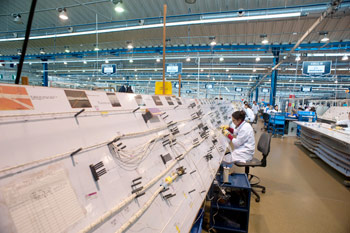
It had negligible oil, natural gas, nor any other sources of domestic energy; and few industrial exports. Other than exportable phosphates, its economy was based primarily on agriculture, textiles, and handicrafts. Compared with its oil-rich neighbors such as Algeria and Libya, Morocco seemed destined to remain one of the MENA region’s “basket cases.”
In 1999, however, a new king came to the throne who was determined to take advantage of the nation’s few assets, which consisted of little more than a thousand miles of empty but beautiful beaches along both the Atlantic Ocean and the Mediterranean Sea; and the country’s location at the at the northwest tip of Africa. Over the next few years, King Mohammed VI set forth a series of plans to turn each of these into economic wealth and start the country toward major economic growth within a decade.
The Plan for Tourism
In 2001, King Mohammed VI announced “Vision 2010,” a comprehensive plan to develop tourism as Morocco’s primary source of foreign exchange. The initial goal was to raise tourist arrivals from a little over 4m in 2001 to 10m by 2010—a goal that seemed impossible and wildly farfetched at the time. The plan called for refurbishing all the existing tourist sites, such as Fes, Meknes, Marrakech and Casablanca, as well as planning something known as “Plan Azur“—consisting of six entirely new resort cities to be built on Morocco’s empty beaches along the Atlantic and Mediterranean. 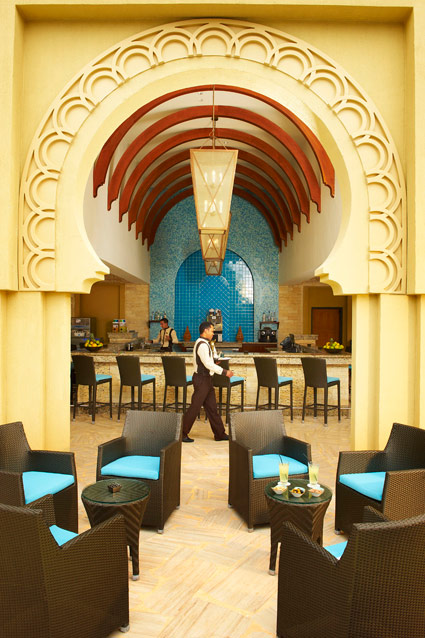
By 2010, the seemingly impossible had been achieved. Tourist arrivals reached 9.4m—94% of the “impossible dream.” The six cities had been planned and two were already funded and being built, while the remaining four were being put out to bid. Investors have been lining up to put their money into them. These are already attracting new tourists as well as new investors who wish to invest in Morocco.
By 2010, such has been the success of this planning that the King could envision doubling the results again. In November 2010, he announced a new plan—”Vision 2020″—to raise tourist arrivals to 20m in a decade. He also added four new planned resort cities to the original six of Plan Azur.
From the smallest investor who just wants to start his own restaurant or retire to run a pension (or riad as pensions are usually called in Morocco), to the largest developers of hotel chains or resort communities, the past record of Moroccan tourism growth is but a prologue for the growth that is in the works. Investors still have the chance to invest in Morocco at the beginning of the second phase of growth. And this growth is not only in the tourist sector but, because of tourism’s success, there are many more employed Moroccans who need every kind of consumer product and service. Thus every sector of the Moroccan economy is growing fast.
Below we shall outline the news of this growth to date and its projections for the future. But let us first glance at what else is entailed.
The Plan for Infrastructure
Along with Vision 2010 to first increase tourism from 4m to 10m by 2010 also came vast plans to increase infrastructure development to support this growth. This includes everything from airport expansion and new airline routes to new highways and rail lines; from new taxi services to new bus and transportation companies; from souvenir shops to new super- and hyper markets; from new water supplies and wastewater treatment plants, to new energy sources and new Green projects. Thus the good news for investors is that Morocco’s success in attracting tourists means not only new investment in tourism, but also new investment opportunities in every other aspect of the economy.
Capitalizing on Morocco’s Location
In addition to capitalizing on Morocco’s tourist possibilities, the King also envisioned that Morocco’s location at the northwest corner of Africa—on both the Atlantic Ocean and the Mediterranean Sea, less than 14 km from Europe—makes it the natural location to become the logistics center and transshipment hub for trade from four continents: from North America, South America and Europe to Africa and the rest of the Middle East; and from Africa and the the Middle East to Europe and the Americas.
To realize this goal, required three requirements had to be put in place:
- Free trade agreements (FTAs) with the US, EU, and others;
- Open Skies agreements and new airline routes; highways and rail lines;
- Attracting investment for port, transshipment, and industrial activities.
Free Trade Agreements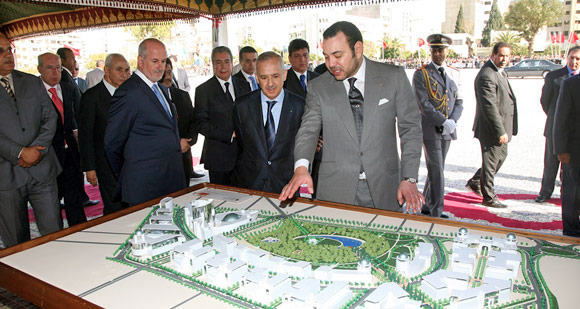
In order to become a trade hub, Morocco spent the first decade of the 21st century opening itself to international trade.
In 2004, Morocco became the second Arab nation (after Jordan in 2000) to enter into a Free Trade Agreement with the US.
In 2005, Morocco joined the EU Neighborhood Association for trade, and in 2008 was the first Arab country in the MENA region to be granted the coveted “Advanced Status” as a full trading partner. (Jordan received Advanced Status in 2010). As a result, Morocco is the only country in North Africa—and one of only two Arab countries in the Middle East—to have completely free and open trade rights with the US and all the countries of the EU.
During this period, Morocco has also sought and entered into bilateral free trade agreements with most of the other countries of the MENA region, and is now engaged in obtaining such agreements with all of the rest of the countries of Africa, as well as numerous countries in both Americas, Asia, and the Pacific. As a result, Morocco today has more free and open trade agreements than any other nation in all of the MENA region and Africa.
Open Skies
To achieve its goals both in tourism and as a trade hub, Morocco needed a revamped aviation service industry, new and enlarged airport facilities, and most importantly, access to airline routes to service the country. Getting the latter was to be its prime goal for the first decade of the 21st century.
In 2004, therefore, Morocco liberalized aviation transport, and in 2005 negotiated a full Open Skies Agreement OSA) with the EU that went into effect in 2006. With the OSA, there are no limits for airlines, whether limits of nationality, of flight origin, of passenger capacity, or limits of airports.
Immediately 13 new airlines entered the Moroccan market, and Morocco committed to spending US$30bil. for new airplanes for Royal Air Maroc, as well as expanding airport facilities at all its major cities and establishing new air facilities throughout the country.
As a result, Morocco is today served by a multitude of major airlines and airline routes with connections to all parts of the world, as well as connected by air internally to provide excellent air service to all parts of the country.
Jet4you
One example of this development is Jet4you. Karim Baina, the current President of Jet4you, recalls that he began working for the Federation of Tourism of Morocco ten years ago, in 2001, when King Mohammed VI announced Vision 2010. Four years later, Jet4you grew out of Vision 2010. According to Baina:
“Jet4you was created right after the liberalisation agreement signed between the Kingdom of Morocco and the European Community, which was in late 2005, so our company was the first low-cost airline to operate from Casablanca, the most important Moroccan air base. This is one of the company’s strong points: it was created as a result of the Open Skies Agreement and it was the first to liberalize the sky between Morocco and Europe.”
Baina and Jet4you are very proud of the role that they played in helping Moroccan tourism reach 94% of the Vision 2010 goals of 10m tourist arrivals by the end of 2010. In November 2010, King Mohammed VI announced a new set of goals—called “Vision 2020”—which involve increasing tourist arrivals by another 8m in the next ten years. Baina sees Jet4you continuing to play a prime role in Vision 2020:
“Jet4you…was part of the 2010 plan and will continue to be a dominant player for the 2020 plan by attracting even more tourists and being able to transport them from Europe to the main Moroccan tourist attractions. New resorts will be available soon in northern Morocco—Saidia, Nador, Agadir, Essaouira—and Jet4you will be an active participant in transporting tourists to these new destinations.”
Baina sees the Morocco-EU Open Skies Agreement as serving two major functions. On the one hand, he says, it has resulted in the “democratizing of air travel,” which he explains as follows:
“The first customers to benefit from the agreement were the Moroccans residing abroad who, before the creation of Jet4you, would come home only once a year, as there was little choice between the national airline of Morocco and its European counterparts. Others would not be able to afford an expensive airline ticket, so they would come by land. People now enjoy the alternative of flying that provides better quality, comfort and security, so our company is proud to have democratized air travel. Afterwards, of course, other airlines have seized this opportunity and we now have several low-cost carrier colleagues operating in Morocco. This translates into an increased competition on the air transport market and a greater number of available seats to the benefit of the customers who enjoy special rates at a fraction of the initial cost before the signing of the Open Skies Agreement.”
On the other hand, says Baina, the Open Skies Agreement “has ultimately developed the Moroccan airline industry” through the introduction of competition:
The Open Skies agreement signed between Morocco and the European Community has ultimately developed the Moroccan airline industry….Being the first low-cost airline in Morocco, Jet4you was in direct competition with the [national] flag carrier [Royal Maroc Airlines] for several destinations, but it was able to secure shares of the market and even gain leadership on certain routes. For instance, Jet4you was the first low-cost carrier to operate between Belgium and Morocco, so the national airline had to adapt accordingly.
Jet4you is part of TUI Travel PLC, which is the leading European travel group providing air service for tourism throughout the Mediterranean—especially to Morocco. This group comprises seven airlines with 160 aircraft and focuses on offering volume travel packages.
According to Baina, Jet4you will continue to work with TUI Travel PLC “to develop the tourist transport industry in Morocco,” as well as work with other tour operators. This results in a “two-sided strategy”—involving individual sales and volume sales. Concerning individual sales, “Developing tourist activity in Morocco is our priority for the next 24-36 months in order to grow the low-cost side of our business and to maintain leadership on our destinations.” Concerning volume sales, “Jet4you will continue to develop partnerships with other European tour operators who wish to work with a major player in Morocco that offers an outstanding quality of service.”
Jet4you’s goals for the next five years, according to Baina, are simple and straightforward: 1) to be one of the leading low-cost companies in Morocco; 2) to operate under the best practices of the industry; and 3) to be very focused on the customer service and offer to our clients the best product in this part of the world.
Jet4you is part of the group strategy of TUI Travel PLC—which is the largest supplier of tourism to Morocco—and aims to grow with it. But Baina also sees TUI Travel PLC as creating new opportunities for both Moroccan tourism and Jet4you:
“Starting April 2011, our company we will open new destinations together with TUI Germany, the group’s German tour operator, from Agadir to Düsseldorf, Frankfurt and Basel. Jet4you works as a tool to support the group’s development in Morocco. There is also a functional aspect that comes from a synergy at the operational level and which allows Jet4you to optimize its services.”
In the end, though, Baina’s goals for Jet4you are not different from his goals for Morocco. He sees “Morocco developing on the right side, and Jet4you is partly responsible for this.”
“Personally,” he adds, “my dream is for Morocco to welcome more and more tourists who can enjoy excellent quality services and thus become future ambassadors for our country.”